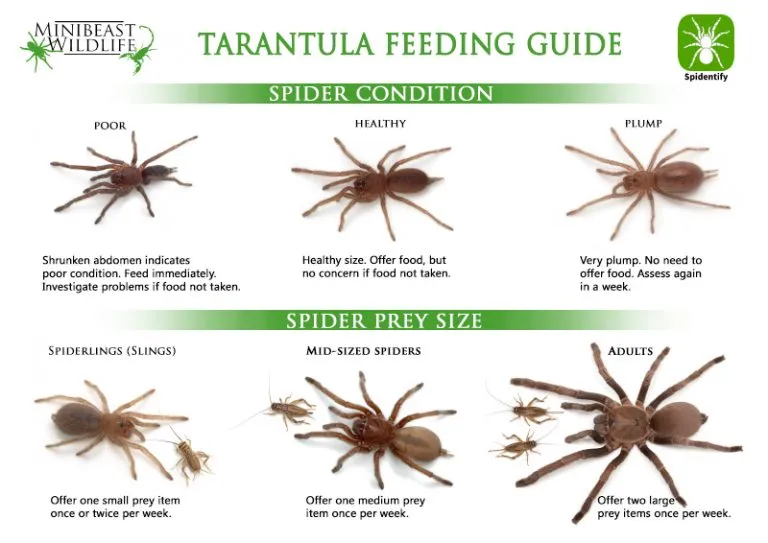Understanding Tarantula Feeding Needs
Caring for a tarantula is a rewarding experience, but it comes with responsibilities. One of the most crucial aspects of tarantula care is understanding their feeding needs. Unlike many pets that require daily feeding, tarantulas have unique metabolic rates and feeding habits. This guide will help you determine how often to feed your tarantula, considering various factors that influence their appetite and overall health. Providing the right amount of food at the right time is vital for their growth, well-being, and longevity. By following these guidelines, you can ensure your tarantula thrives in its habitat and enjoys a healthy life.
Factors Influencing Feeding Frequency
Several factors influence how often you should feed your tarantula. Understanding these factors is crucial for tailoring a feeding schedule that meets your tarantula’s specific needs. Ignoring these aspects can lead to underfeeding, overfeeding, or other health issues. Consider these key elements to determine the right feeding frequency for your pet tarantula.
Tarantula Species
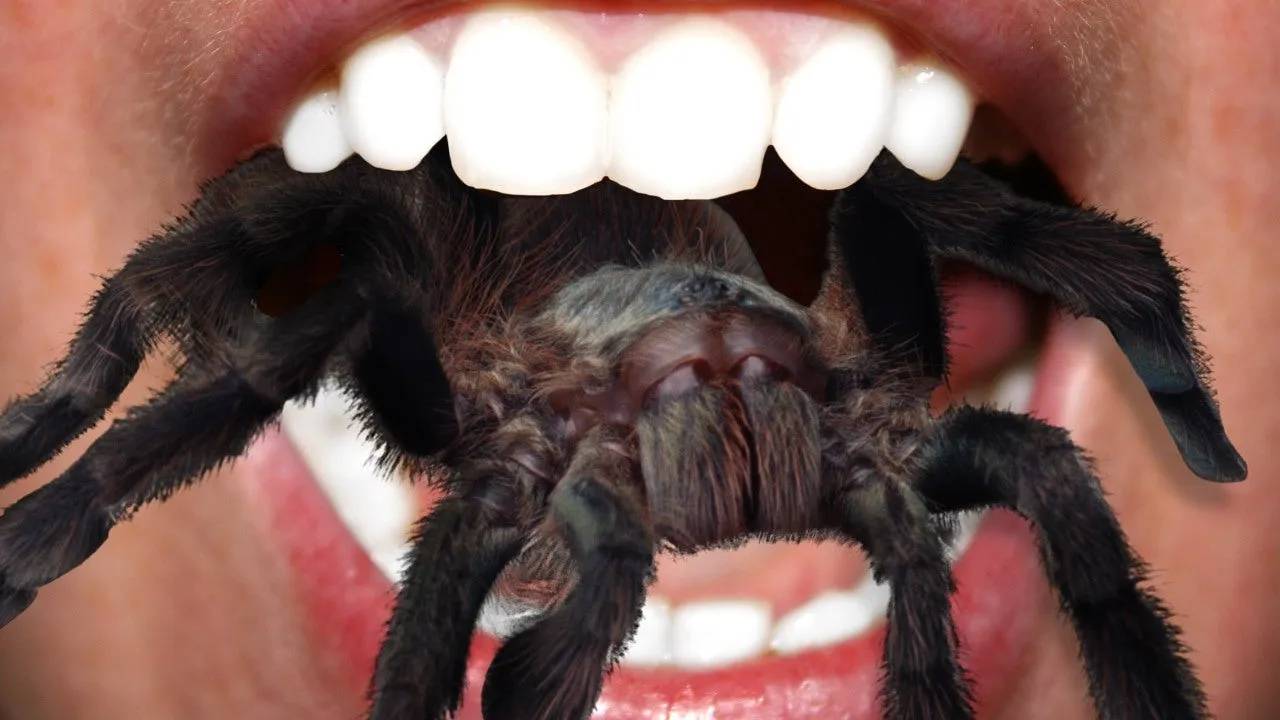
Different tarantula species have varying metabolisms and growth rates. Some species, like the fast-growing Grammostola and Brachypelma, might need more frequent feeding during their juvenile stages. Others, particularly those from arid environments, may have slower metabolisms and require less frequent meals. Researching the specific needs of your tarantula species is essential. Learn about their natural habitat and dietary habits to create a feeding schedule that mimics their natural environment as closely as possible. This knowledge will help prevent overfeeding or underfeeding, both of which can harm your tarantula.
Tarantula Size and Age
The size and age of your tarantula are primary determinants of its feeding frequency. Spiderlings, the youngest tarantulas, require more frequent feeding because they are in a rapid growth phase. As they mature, their growth rate slows down, and their feeding needs decrease. Adults typically need less frequent feeding compared to juveniles. Adjusting the feeding schedule according to the growth stage ensures that your tarantula receives the right amount of nutrients at each stage of its life. Always monitor your tarantula’s abdomen size; a well-fed tarantula should have a plump abdomen, indicating sufficient food reserves.
Environmental Conditions
Environmental conditions, particularly temperature and humidity, affect a tarantula’s metabolism and appetite. Warmer temperatures usually speed up the metabolism, potentially increasing their need for food. Conversely, cooler temperatures can slow down their metabolism, leading to a decrease in appetite. Humidity levels also play a role, as tarantulas from humid environments might require more moisture, influencing their feeding behavior. Adjusting the feeding schedule according to these environmental factors helps maintain a healthy balance. Always ensure your tarantula’s enclosure is set up correctly to create an ideal environment for your species. Avoid extreme conditions, as they can stress your tarantula and negatively affect its health.
Feeding Frequency Guidelines

Establishing a consistent feeding schedule is a cornerstone of tarantula care. The frequency varies depending on the factors mentioned above, but these guidelines offer a solid starting point. Always observe your tarantula’s behavior and body condition to fine-tune the schedule for its specific needs. Remember that overfeeding is a common mistake, and it’s better to err on the side of slightly less food than to provide too much.
Spiderlings Feeding Schedule
Spiderlings, being in their most active growth phase, require more frequent feeding. Feed them every 2 to 3 days. Offer small, appropriately sized prey items such as fruit flies or pinhead crickets. Always ensure the prey is smaller than the tarantula’s body to prevent stress or injury to the spiderling. Providing a steady supply of food at this stage supports rapid growth and development. However, do not overfeed, as this could cause health problems. Closely monitor the spiderling’s abdomen to ensure it’s not excessively large or bulging.
Juvenile Tarantulas Feeding Guide
Juvenile tarantulas can be fed every 4 to 7 days. The exact frequency will depend on the species and individual’s appetite. Offer prey items that are appropriately sized for their stage of development. Crickets, mealworms, or small roaches are excellent choices. Provide the juvenile with opportunities to hunt and eat. Monitor the tarantula’s abdomen regularly. A healthy juvenile tarantula should have a well-rounded abdomen, but it should not be excessively plump. Adjust the feeding schedule based on the tarantula’s eating habits. If the tarantula refuses food for an extended period, it may be entering a pre-molt phase, and you should stop feeding until after it molts.
Adult Tarantulas Feeding Advice
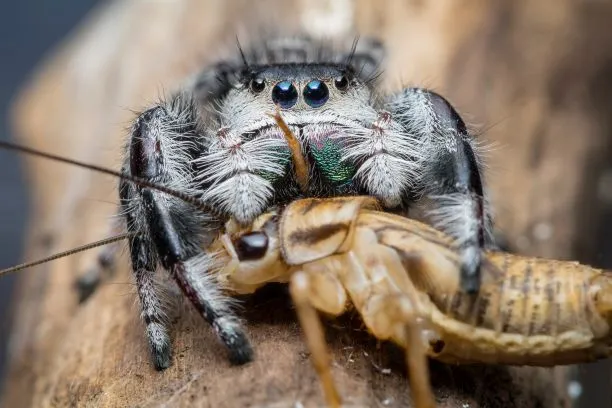
Adult tarantulas need less frequent feeding. They can typically be fed every 7 to 14 days, or even less often. Some adult tarantulas can go weeks or even months without food. Offer larger prey items, such as adult crickets, roaches, or even small mice. It’s crucial to observe the tarantula’s abdomen, as a plump abdomen indicates sufficient food reserves. Adjust the feeding schedule based on the tarantula’s species and individual characteristics. Many adult tarantulas are ambush predators and may not actively hunt their food. Remove any uneaten prey within 24 hours to prevent stress to the tarantula or potential injury. Always ensure that fresh water is accessible to keep the tarantula hydrated.
Choosing the Right Food
Selecting the appropriate prey items is just as important as determining the feeding frequency. Tarantulas thrive on a varied diet of insects, and sometimes, small vertebrates. Providing the right type and size of food ensures that your tarantula receives the essential nutrients for its growth and health. Ensure that the prey is from a reliable source to minimize the risk of introducing parasites or diseases to your pet.
Suitable Prey Items for Tarantulas
The best food options for tarantulas include crickets, roaches, mealworms, and super worms. These insects are readily available at most pet stores and provide a good source of protein. The nutritional value of these feeders is very important, so gut-loading them with nutritious food is also a good idea. For larger tarantulas, you can sometimes offer pre-killed, appropriately sized small mice or pinkies. Always ensure the prey is clean, healthy, and free from pesticides.
Prey Size Matters
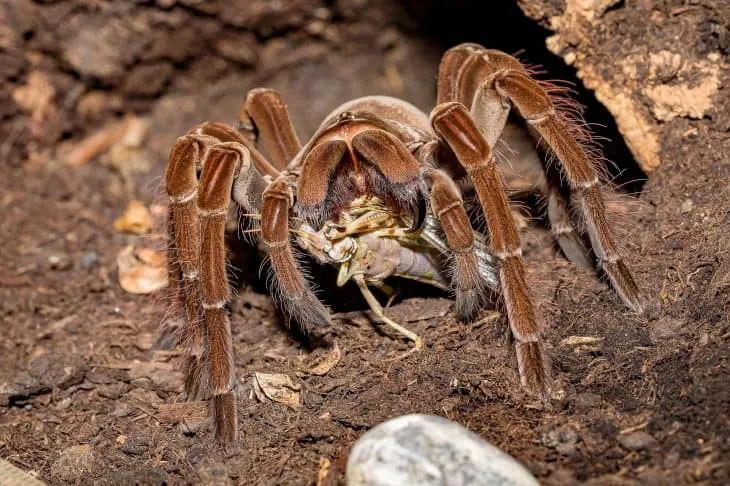
The size of the prey should be appropriate for your tarantula’s size. As a general rule, the prey should be no larger than the tarantula’s body. Offering prey that is too large can stress the tarantula and may cause injury during the hunt. For spiderlings, offer pinhead crickets or fruit flies. Juveniles can handle larger crickets or small roaches, while adults can eat adult crickets, roaches, or even small mice. Always assess the tarantula’s body size and choose the prey accordingly to make the feeding process safe and manageable.
Feeding Techniques and Tips
Proper feeding techniques can improve your tarantula’s feeding experience and overall health. Here are some tips to make sure you’re providing a safe and enjoyable feeding environment.
How to Introduce Prey
The method of introducing prey depends on your tarantula’s temperament and species. Some tarantulas are active hunters, while others are ambush predators. You can introduce live prey directly into the enclosure for active hunters, ensuring that the prey item is the correct size. For ambush predators, consider using tongs to offer food, allowing the tarantula to grab its meal easily. This method helps prevent the prey from hiding and ensures the tarantula has access to the food. Always supervise the feeding process to monitor how your tarantula interacts with the prey.
Handling Uneaten Prey
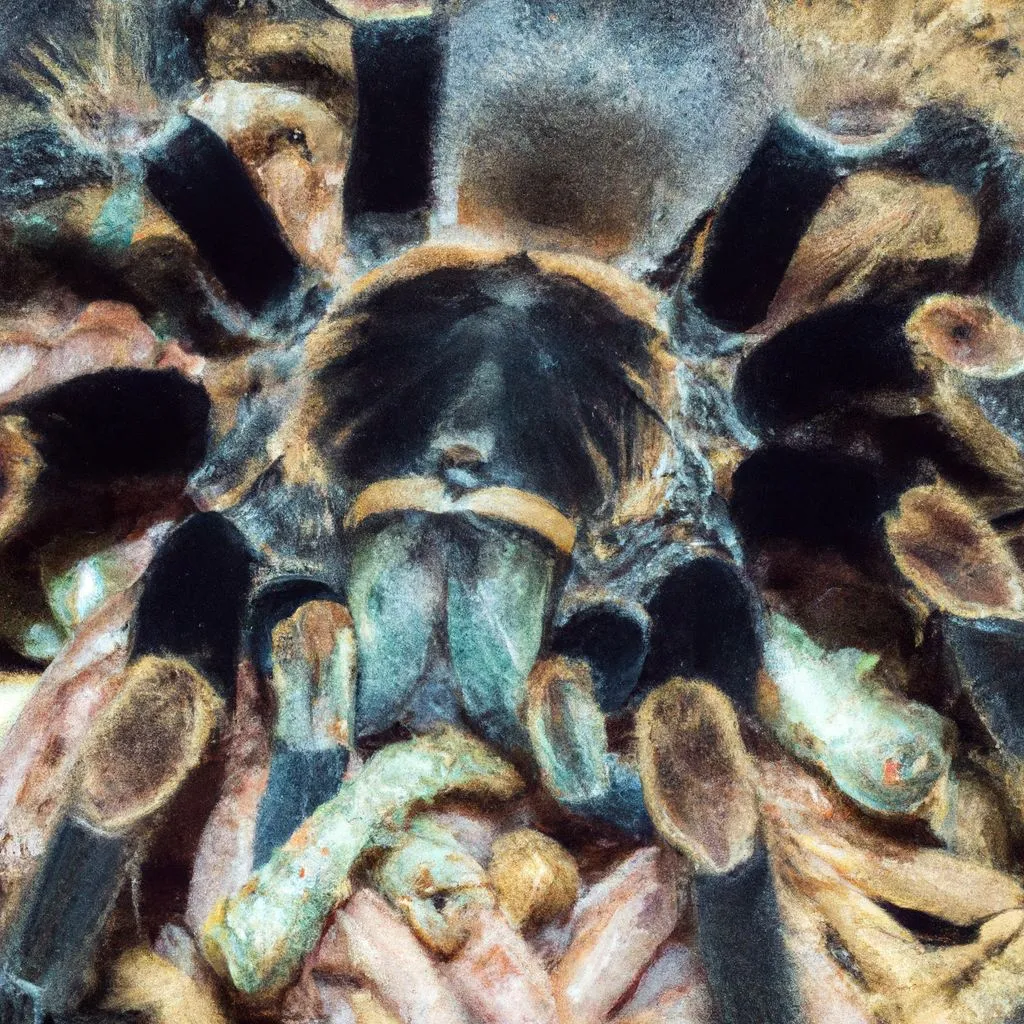
Remove uneaten prey within 24 hours. Leaving live prey in the enclosure for extended periods can stress your tarantula and may lead to injury. Uneaten prey can also pose a risk of harming the tarantula during molting. If your tarantula does not eat the prey, it may not be hungry, or it could be preparing to molt. Removing the uneaten prey helps keep the enclosure clean and reduces potential hazards. You can use tongs to safely remove the prey or carefully guide the prey into a container.
Monitoring Your Tarantula’s Health
Regular monitoring is essential for ensuring your tarantula’s health. Pay attention to its behavior, body condition, and any changes in its habits. These observations can help you adjust the feeding schedule and identify potential issues. Early detection of any health problem can improve the success of treatment.
Signs of Overfeeding
Overfeeding can lead to several health problems. The most visible sign of overfeeding is a very plump abdomen. Other signs include lethargy, reduced activity, and difficulty molting. If you suspect you’re overfeeding your tarantula, reduce the feeding frequency and provide a smaller meal. Monitoring your tarantula’s abdomen regularly is an easy way to avoid this issue. If your tarantula appears overly plump, it is a clear signal to cut back on the amount of food.
Signs of Underfeeding

Underfeeding can stunt growth and weaken your tarantula. Signs of underfeeding include a noticeably small abdomen, excessive movement, and lethargy. Your tarantula might also appear more irritable or restless. If you notice these signs, increase the frequency of feeding and the size of the prey. Be sure to feed an appropriately sized meal. Always look at the abdomen, as a small abdomen can indicate that it is underfed. If your tarantula does not eat, it may be entering a pre-molt phase. Observe your tarantula and react to its behavior.
Common Feeding Mistakes to Avoid
Many common mistakes can affect your tarantula’s health. Being aware of these pitfalls and avoiding them will help you provide the best care. Correcting these mistakes ensures that your tarantula gets all of the care it needs. Always make sure that all factors of care are provided for.
One of the most common mistakes is overfeeding, which we have already discussed. Another mistake is offering prey that is too large, which can lead to injury. Always offer prey that is appropriately sized for your tarantula. Feeding during molting is another mistake to avoid, as your tarantula is vulnerable during this process. Feeding your tarantula live prey when it’s in pre-molt can cause it to be stressed and at risk. Always ensure that fresh, clean water is available. Finally, it is vital to do your research on your species. Knowing your species’ specific care requirements will help prevent a lot of problems.
By following these guidelines, you can ensure your tarantula receives the proper amount of food and lives a long, healthy, and happy life. The feeding frequency depends on various factors, so regular observation is necessary for your pet’s wellbeing.
